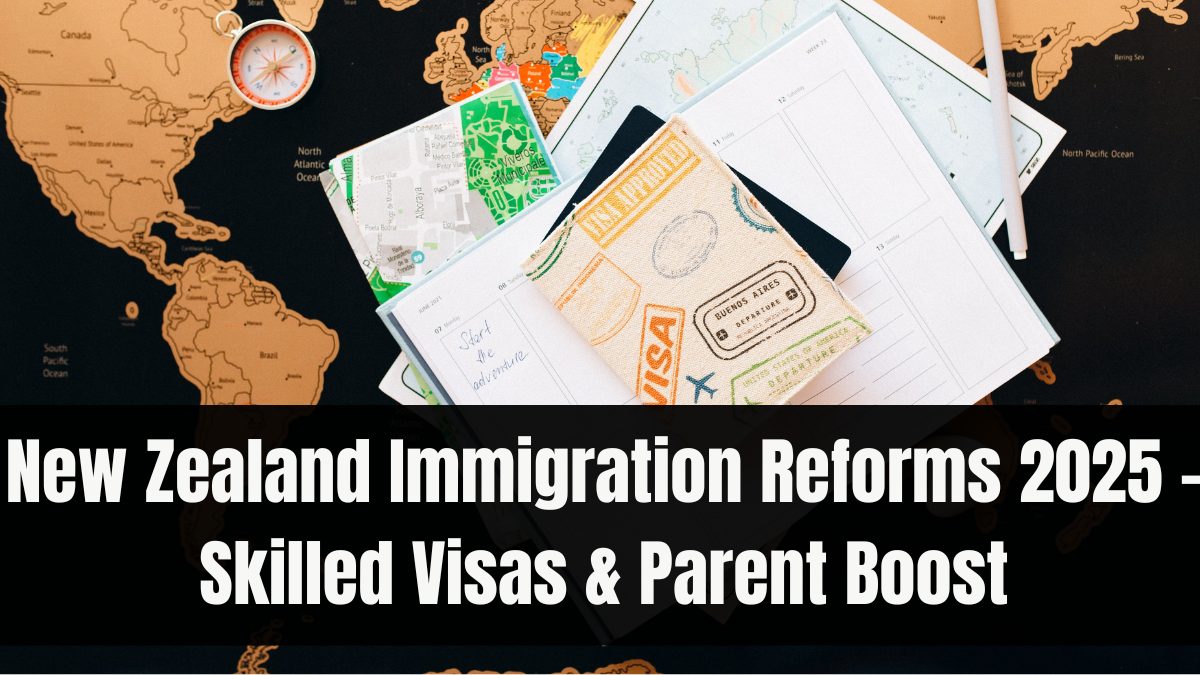New Zealand’s immigration landscape has undergone a major transformation in 2025, with the government unveiling key updates to both skilled migration and family reunification pathways. From a streamlined Accredited Employer Work Visa (AEWV) to the new Parent Boost Visa, the New Zealand Skilled & Parent Visas reforms are designed to attract top global talent while supporting stronger family ties. These changes reflect New Zealand’s renewed focus on economic growth, labour market balance, and humane immigration policy.

AEWV Reform: Stricter but Smoother
The Accredited Employer Work Visa (AEWV)—the primary pathway for skilled workers—has been updated with both tighter controls and improved processing. Key features under the 2025 changes include:
-
Higher minimum salary thresholds pegged to market wages
-
Priority processing for roles on the Green List (healthcare, IT, construction)
-
Mandatory skills verification for select trades and technical roles
-
Introduction of a compliance scorecard for employers
These reforms aim to ensure only genuine, high-need job roles are filled via migration, while reducing worker exploitation and improving visa integrity.
New Zealand’s Green List Expansion
In 2025, the Green List has been expanded to fast-track residency for professionals in critical shortage areas. Newly added roles include:
-
Cybersecurity analysts
-
Primary school teachers
-
Veterinarians
-
Electricians and plumbers
-
Renewable energy engineers
Applicants under the Green List can now gain residency pathways within 2 years, with priority processing and fewer documentation hurdles—making New Zealand more competitive in the global talent market.
Parent Boost Visa – A Welcome Change for Families
Among the most notable updates is the introduction of the Parent Boost Visa, a new category under the New Zealand Skilled & Parent Visas policy that:
-
Allows eligible parents to join their children already residing in NZ on skilled or residence visas
-
Offers a 5-year renewable visa with a pathway to permanent residency
-
Does not require income sponsorship but uses a points-based system based on age, health, and dependents
-
Includes access to public healthcare and limited work rights
This category is seen as a major step in making New Zealand immigration more family-friendly while addressing social and emotional support needs for migrants.
Faster Processing & Digital Updates
To reduce application backlogs, Immigration New Zealand (INZ) has:
-
Upgraded its online visa portal for all AEWV and Parent Boost applications
-
Introduced a real-time tracking system for applicants
-
Enabled document verification APIs with overseas qualification authorities
-
Deployed AI-based triaging to sort low-risk applications for fast clearance
As a result, most AEWV applications are now processed in 30–45 working days, compared to the 90+ days average in previous years.
Impact on Migrant Workers and Employers
For skilled migrants, the 2025 policy reforms mean:
-
Better visibility on visa eligibility through updated occupation checklists
-
More predictable timelines and post-arrival support
-
Employer accreditation ensuring job role legitimacy and safety
Employers benefit from reduced paperwork, transparent salary benchmarking, and automatic renewal notifications for accredited status.
FAQs
What is the Parent Boost Visa introduced in 2025?
It’s a new visa stream allowing eligible parents of skilled migrants to stay in New Zealand for 5 years, with a path to permanent residency.
What are the major AEWV changes in 2025?
The AEWV now includes higher salary thresholds, job market checks, and skills assessments to ensure only in-demand talent is admitted.
How long does AEWV processing take now?
Most AEWV applications are processed within 30–45 working days due to system upgrades and risk-based triaging.
Do Green List jobs still offer faster residency?
Yes. Green List job roles enjoy priority processing and a faster path to residency, with minimal paperwork and bonus points.
Can parents under the Parent Boost Visa work in New Zealand?
Yes, they can work part-time under limited conditions, depending on the sponsor’s visa type and income status.
Click here to know more.
